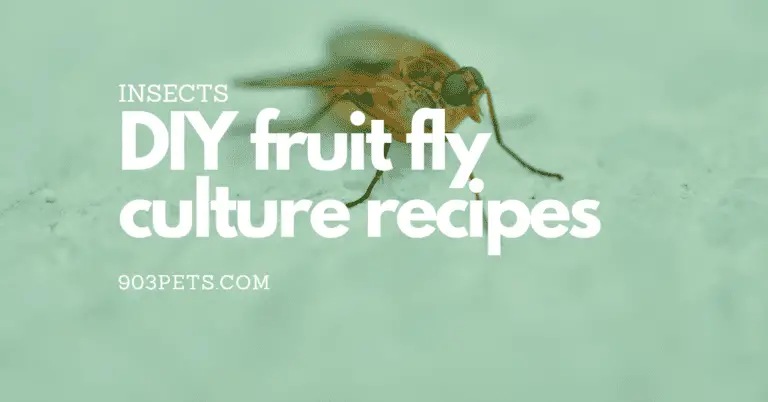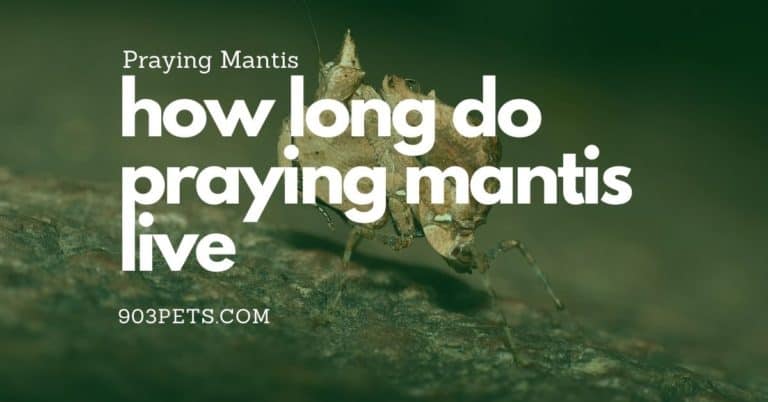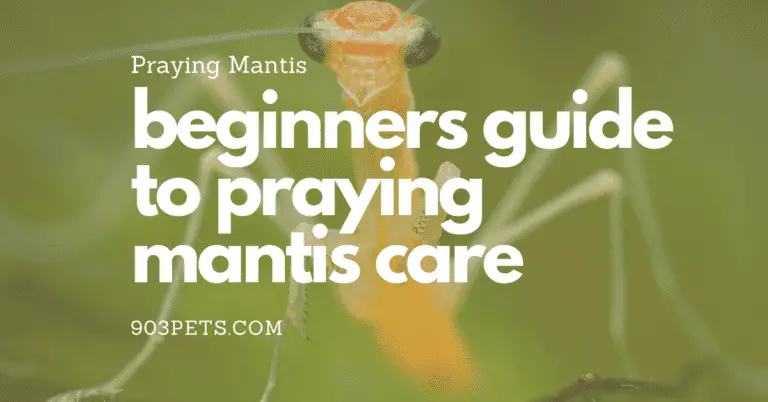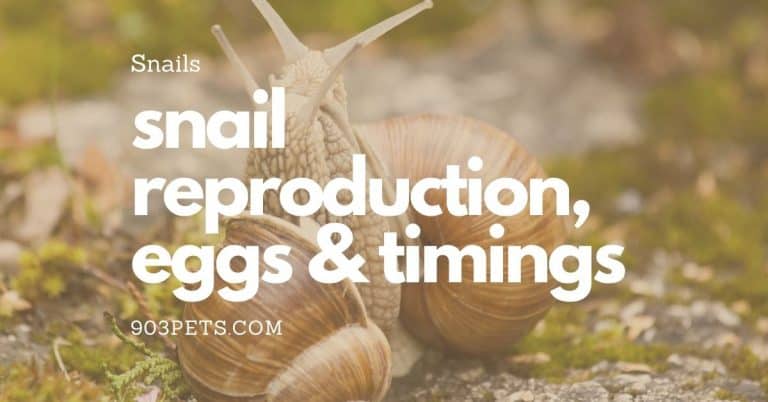10 Snail Friendly Plants for a Terrarium [Care Instructions]
Snails are one of the most popular pets. They come in a variety of colors and shapes, so you can find just the right kind for your terrarium. The best part? Snails are low maintenance pets! However, when it comes to choosing plants for their habitat, some people get stumped. There are many types of plants that snails will enjoy exploring in their new home – but not all plants are safe for them to eat. In this article, we’ll discuss what makes a plant unsafe and list 10 snail-friendly plants that they will love (and thrive) on!
1. Peace Lily
![10 Snail Friendly Plants for a Terrarium [Care Instructions] 2](https://cdn-0.903pets.com/ifywhoft/2021/04/snail-friendly-peace-lily-1024x536.jpg)
The Peace Lily is one of the most popular plants for a terrarium. It has long leaves and white flowers which are both safe to eat! The only downside to this plant (aside from its low light requirement) is that it doesn’t really provide any ground cover, so snails may get bored after a while.
Peace lilies can grow up to 18 inches tall in their natural environment – but when they’re happy in your terrarium, you might not need more than two or three plants per square foot space. To keep them healthy, give them at least six hours of sunlight a day and be sure to water them regularly. They will also need fertilizing with an all-purpose fertilizer every few weeks during warmer months.
![10 Snail Friendly Plants for a Terrarium [Care Instructions] 1 10 snail safe terrarium plants](https://cdn-0.903pets.com/ifywhoft/2021/04/10-snail-safe-terrarium-plants.jpg)
2. Pothos
![10 Snail Friendly Plants for a Terrarium [Care Instructions] 3](https://cdn-0.903pets.com/ifywhoft/2021/04/Pothos-Snail-Friendly-Plant-1024x536.jpg)
Pothos is a great option for those with low light levels. It’s also perfect if you have pets because it only grows about 18 inches tall and will not require any pruning to accommodate your snail. Pothos plants are safe to eat (but don’t offer much in the way of ground cover).
The best conditions for pothos include three hours per day or more of bright indirect sunlight and watering once every few days during summer months when the plant is actively growing.
When winter arrives, reduce its water intake to just two times a week and be sure that it receives at least four hours daily from an artificial light source like fluorescent grow lights or compact FLUORESCENT bulbs (CFLs).
3. Boston Fern
![10 Snail Friendly Plants for a Terrarium [Care Instructions] 4](https://cdn-0.903pets.com/ifywhoft/2021/04/Boston-Fern-Snail-Friendly-Plant-1024x536.jpg)
You’ll also want to include the Boston Fern. This plant is safe for snails because it’s toxic to slugs and other pests that might harm your snail, but not in a way that would hurt them as well.
This plant does require high humidity levels and frequent misting during hot summer days so be sure you maintain these conditions. The more often they are misted, the better their leaves will grow – just don’t let water sit on top of its roots or you may get root rot!
Boston ferns can be grown both indoors and outdoors; if you decide to keep this one inside, make sure there is enough space between plants since they can reach up to two feet tall with large leaves.
4. Snake Plant
![10 Snail Friendly Plants for a Terrarium [Care Instructions] 5](https://cdn-0.903pets.com/ifywhoft/2021/04/Snake-Plant-Snail-Friendly-Plant-1024x536.jpg)
The Snake Plant is another great option that’s safe for snails. This plant prefers a humid environment and doesn’t need to be watered as often since it takes in water through its leaves (which means less risk of over-watering).
It can grow up to three feet tall, but the height will vary depending on how much light they receive.
The best place for this one would be near a window where it’ll get lots of natural light. Just be careful your snails don’t get too much heat!
Snake Plants are toxic to slugs which make them an excellent choice for a snail terrarium.
5. Lucky Bamboo
![10 Snail Friendly Plants for a Terrarium [Care Instructions] 6](https://cdn-0.903pets.com/ifywhoft/2021/04/Lucky-Bamboo-Snail-Friendly-Plants-1024x536.jpg)
Lucky Bamboo is another excellent choice. This plant prefers a humid environment and grows in the water, which means it’s not going to need as much light or space if you decide to put your terrarium on an indoor windowsill.
It’ll only grow up to six inches tall with this setup but Lucky Bamboo also makes for great decoration! These plants are toxic to slugs too so they’re a safe option for snail lovers.
It can take awhile before these plants start growing once submerged in water, but don’t worry because they eventually sprout into long green stalks that add some height (and beauty) to any home decor – plus more room for snails!
Some people recommend rinsing the water every so often to keep it clear and fresh, but this isn’t necessary since the leaves act as a natural filter. If you do decide to rinse out the terrarium’s container, be sure to change the plant for another lucky bamboo before putting them back in!
The best part? Lucky Bamboo can live for up to five years without light or soil if kept underwater – not bad when they’re inexpensive and come with such great benefits!
6. Zebra Cactus
![10 Snail Friendly Plants for a Terrarium [Care Instructions] 7](https://cdn-0.903pets.com/ifywhoft/2021/04/Zebra-Cactus-Snail-Friendly-Plant-1024x536.jpg)
Zebra cactus can grow to about two feet tall when planted and watered, which happens to be the perfect height for snails as well! It’s easy to take care of this plant because it doesn’t require soil but instead lives in a pot with only water. Snail terrariums should have one zebra cactus per square foot so make sure you consider how many plants your project needs before purchase.
The roots are white and they give off a sweet fragrance that is subtle enough not to overpower any other flowers or scents something else may be holding inside your terrarium – an added bonus if you’re looking for some more aesthetic appeal while beautifying at home!
In order to keep these plants alive, you will need to feed it once a week with fertilizer such as snail and slug pellets for containers. It’s important not to overwater your zebra cactus, so make sure that when the top of soil is dry or starting to crack that water is applied.
7. String of Pearls
![10 Snail Friendly Plants for a Terrarium [Care Instructions] 8](https://cdn-0.903pets.com/ifywhoft/2021/04/String-of-Pearls-Snail-Friendly-Plant-1024x536.jpg)
The string of pearls, a popular name for Mexican Hat Plant (Seed), is native to Mexico and grows about six inches tall. They are drought tolerant so they do not require much moisture at all in order to stay alive—a bit of water once every few weeks will suffice if you’re growing your plants indoors.
String of Pearls are also excellent air purifiers as well as mosquito repellants! If left outdoors, these plants love morning sun but can tolerate full shade during the day time hours which means that this plant can survive any light conditions.
This plant has succulent green leaves with dark red spots on them and it produces small pink flowers throughout summertime months only from June through August with new leaves appearing in springtime.
8. Cactus, Spineless (Astrophytum)
![10 Snail Friendly Plants for a Terrarium [Care Instructions] 9](https://cdn-0.903pets.com/ifywhoft/2021/04/Spineless-Cactus-Snail-Friendly-Plants-1024x536.jpg)
Astrophytum are also commonly known as the “devil’s backbone” due to their sharp needles. These plants grow slow, but live a long time and can reach heights of up to four feet tall.
It is best if this plant has direct sunlight for at least six hours per day or indirect light all day in order to be happy; they don’t need much water and do not require fertilizer. This makes it an ideal choice for any snail terrarium!
9. Hens and Chicks (or any other succulent)
![10 Snail Friendly Plants for a Terrarium [Care Instructions] 10](https://cdn-0.903pets.com/ifywhoft/2021/04/Hens-And-Chicks-Snail-Friendly-Plants-1024x536.jpg)
Another snail-friendly plant is the Hens and Chick succulent. When caring for this type of plant, you shouldn’t need to do much more than water it a few times per month and provide decent light (though most succulents can be kept in indirect sunlight).
The Hens and Chicks is also one of the hardier types of plants on our list – if they’re exposed to too much direct sun or wilted from lack of watering, they will often recover quickly.
However, since snails are not very big fans of full-sun exposure themselves, keep them away from windows that receive lots of morning or afternoon light! Do take care when moving your snail terrarium around as well; overzealous handling could lead to branches snapping off.
10. Iceplant (Mesembryanthemum crystallinum)
![10 Snail Friendly Plants for a Terrarium [Care Instructions] 11](https://cdn-0.903pets.com/ifywhoft/2021/04/Ice-Plant-Snail-Friendly-Plant-1024x536.jpg)
This plant is a succulent that grows in full sun to partial shade.
Its care requirements are similar to the Hens and Chicks, requiring only moderate amounts of watering and light exposure.
It’s also one of the hardier plants on our list: if its branches do break off from overzealous handling or too much direct sunlight, they will grow back quickly!
The iceplant has an interesting name because it looks like someone left chunks of broken ice behind after touching melting snow – hence the “crystal” part of its common name. It can be found growing throughout Africa as well as Australia, South America, and North America.
Bonus. Clover – edible ground cover
![10 Snail Friendly Plants for a Terrarium [Care Instructions] 12](https://cdn-0.903pets.com/ifywhoft/2021/04/Clover-Snail-Friendly-Plant-1024x536.jpg)
The clover is a common ground cover that can also be used to spice up your snail terrarium. It’s edible and will help keep the soil moist for other plants in the habitat!
Taking care of clover is easy, just keep it watered and fertilize with compost or manure every few weeks.
It’s a good idea to avoid planting clover in the same pot as your snail if you’re thinking about eating any of its leaves – they can contain nitrates that are harmful for snails, depending on how much they’ve eaten.
Conclusion
Snail are wonderful, low maintenance pets. When creating a snail habitat, choosing plants is important, especially when plants containing alkaloids are toxic to snails. The best plants for a snail terrarium include Hens and Chicks, Peace Lily, English Ivy, Golden Pothos, String of Pearls, Zebra Cactus, Lucky Bamboo, Snake Plant, and Ferns.
Related Questions
What makes a plant unsafe for snail terrariums? Plants that contain alkaloids are toxic to snails. Alkaloids are found in plants that are members of the Solanum genus, which includes tomatoes.
How often do snails need water and how should they be watered? Snails need water every day, and should be watered with a spray bottle or mister.
What should a snail habitat’s light conditions be like? Snails prefer dim light, and should be kept away from windows that receive lots of morning or afternoon sun.
How big do snails get? Snails vary in size depending on the species but are typically between one and a half to four inches long when fully grown.
What is a snail’s life expectancy? Snails usually live for two to five years.
What diet do snails require? Snail food is typically comprised of a small amount of fresh vegetables, like lettuce and spinach, fruit scraps, or edible plants. It should also include calcium-rich foods in order for their shells to grow strong.
If you think your pet is ill, call a vet immediately. All health-related questions should be referred to your veterinarian. They can examine your pet, understand its health history, and make well informed recommendations for your pet.
903pets.com Staff



![Praying Mantis Egg Cases - Buyers Guide [Info & Tips] 17 Praying Mantis Egg Cases – Buyers Guide [Info & Tips]](https://cdn-0.903pets.com/ifywhoft/2022/05/praying-mantis-egg-cases-buyers-guide-768x402.jpg)

![Insect Pets - Which Insects Make The Best Pets? [12 Answers] 21 Insect Pets – Which Insects Make The Best Pets? [12 Answers]](https://cdn-0.903pets.com/ifywhoft/2022/01/insect-pets-are-they-right-for-you-768x402.jpg)
